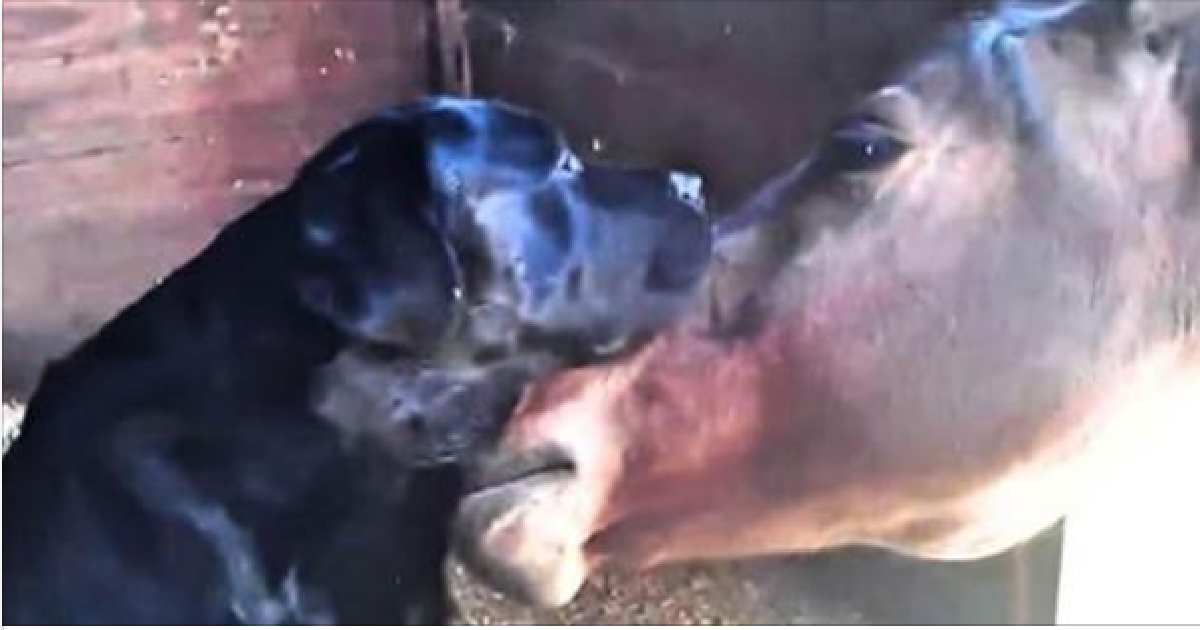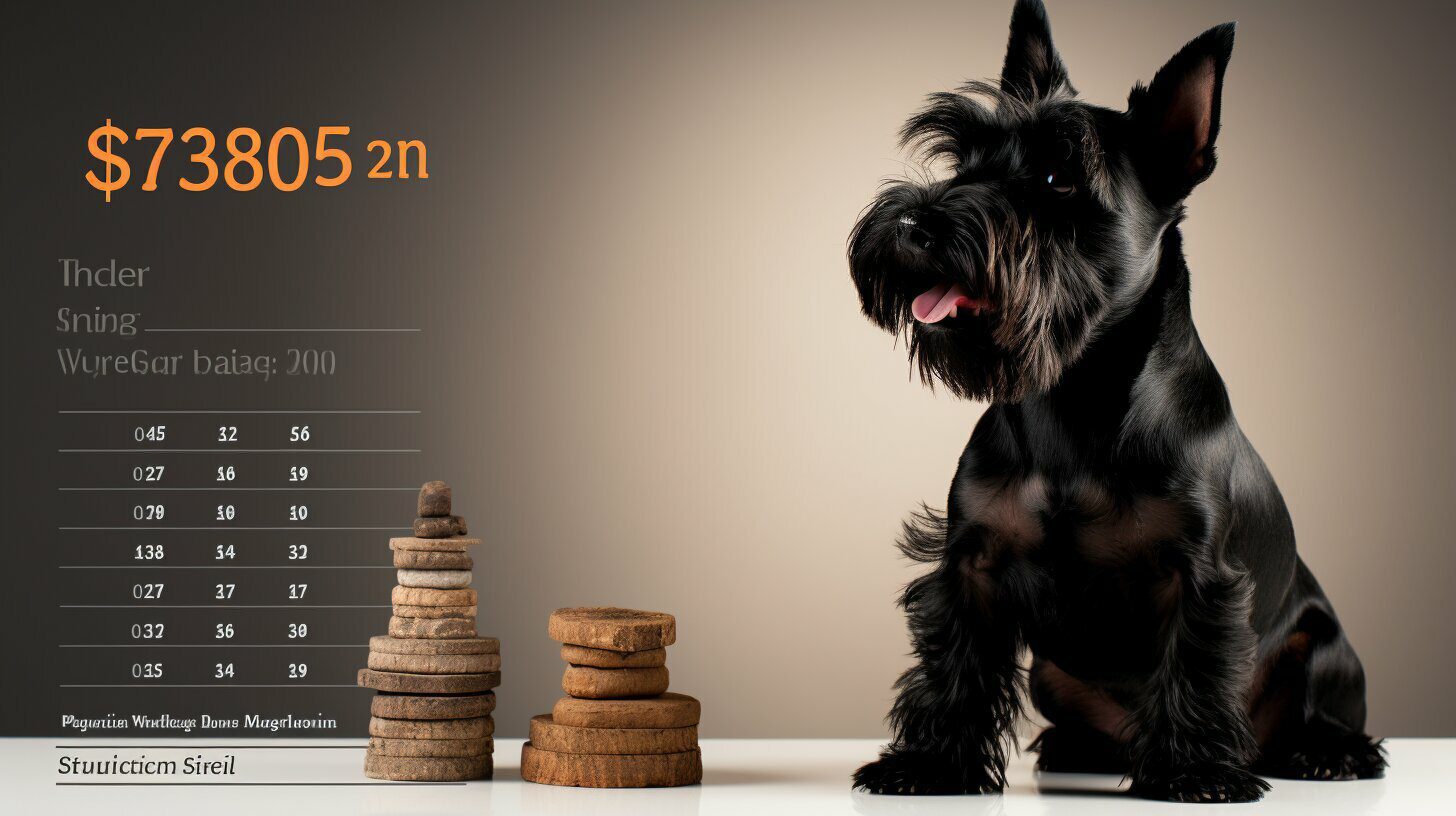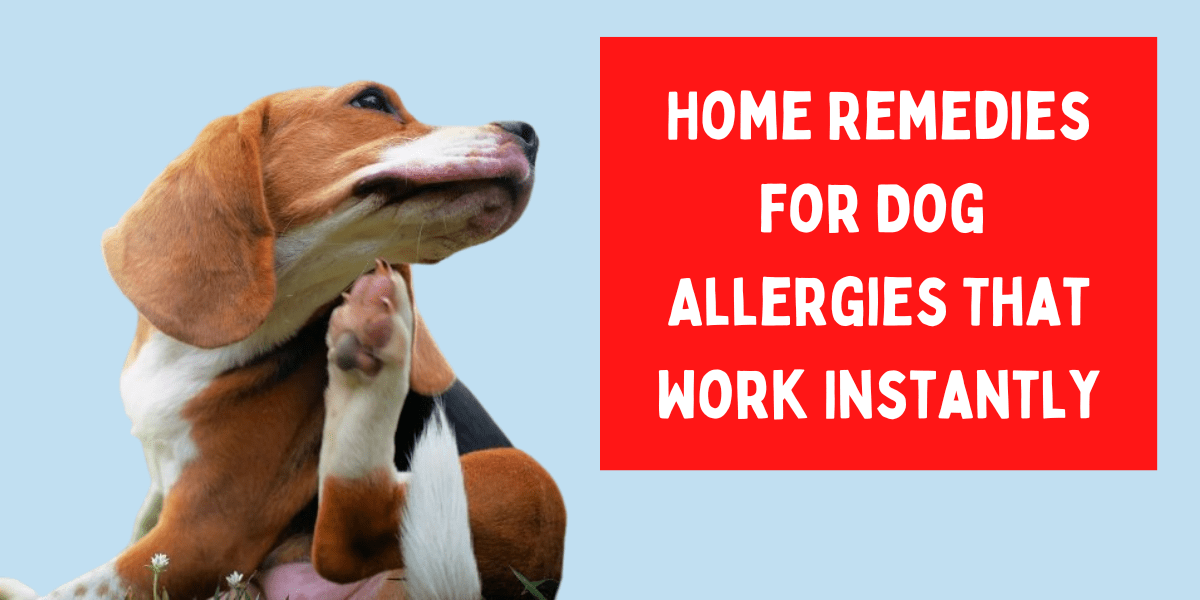Are raw bones safe for dogs? Can they eat them without any consequences? This article will discuss the benefits of bare bones for dogs and answer common questions about their safety. Stay tuned!
What Are Raw Recreational Bones?
Raw recreational bones are specifically designed for dogs to eat and chew on. These bones come from various sources, including beef, sheep, pork, bison, elk, yak, deer, and more. Unlike other edible bones (e.g., cooked or processed), raw meaty bones contain no preservatives or additives. As a result, raw fed dogs have less risk of choking or gastrointestinal issues due to chemicals or other unnatural ingredients.
In addition to being healthier than other edible bones, raw recreational bones are also a great source of calcium and phosphorus for your puppy. These minerals can help support strong dog’s teeth and healthy joints and promote overall bone health. They’re also an excellent way to give your pup something to do when feeling bored or restless.
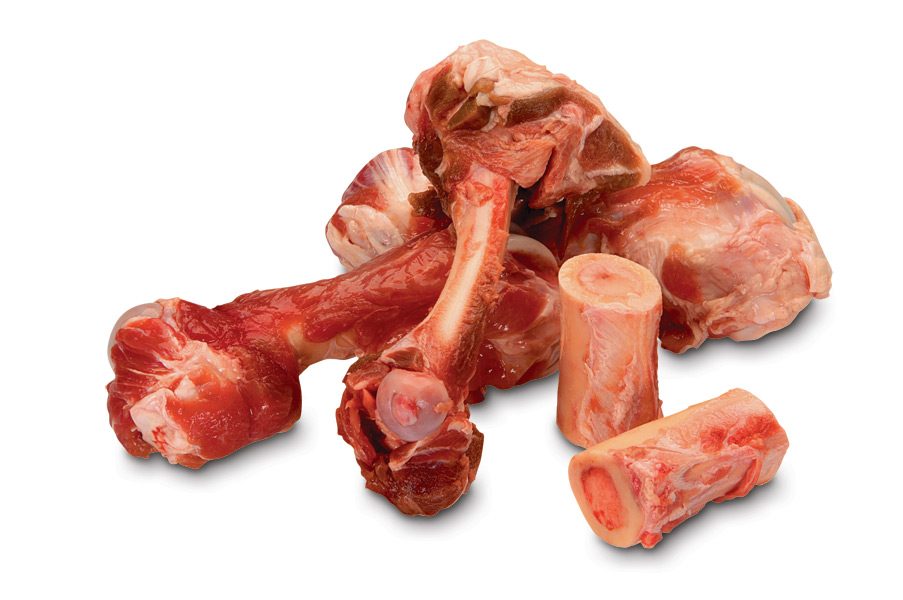
Bone Meal in Food Vs. Recreational Bones
Bone Meal in Food
Bone meal has been used as a supplement to dog food for many years. It provides essential nutrients such as calcium and phosphorus to help keep your four-legged friend healthy and robust. A bone meal is a ground-up mixture of raw beef or poultry bones cooked at high temperatures. The grinding process helps break down the bones, so they are easier to digest, making them a good source of protein and minerals.
Recreational Bones
Recreational bones are typically more significant than a bone meal in food, and their primary use is for recreational purposes such as chewing or playing with. These bones usually come from larger animals like cows or deer and can contain sharp edges, leading to cuts or scrapes on your pup’s mouth or stomach. Additionally, recreational bones can be harder to chew through, so they should only be given if your dog has strong teeth and jaw muscles.
It is also important to note that recreational bones can cause choking hazards if swallowed whole, so it is best not to leave them unsupervised with your pup! Additionally, these types of bones should never be cooked as this can cause them to become even harder and more brittle, which increases the risk of broken teeth mouth or causing internal damage when chewed on by your pup.
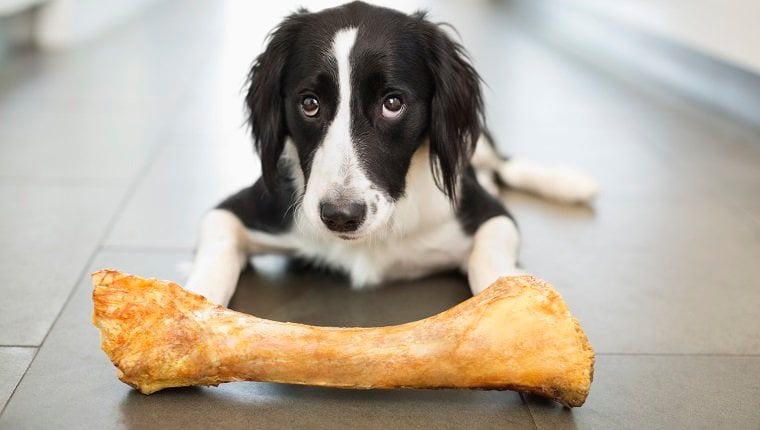
Can Dogs Eat Bones?
Bones are one of the most common treats that pet owners give to their large dogs. But are bones safe for them to eat? The answer is that it depends on which type of bones you’re giving them and how they’re prepared. Therefore, pet owners need to understand which types of bones are safe for their canine companions and which should be avoided.
Which Types of Bones Are Safe for Dogs?
Want to feed your dog a bone but need help figuring out what to give? Raw beef marrow bones, pork, lamb, chicken bones, leg bones, and hip bones are generally considered the safest to feed your dog because they are softer than other bones, making them less likely to splinter when chewed. Buffalo rib bones are best for small dogs under 25 lbs.
However, it is essential to note that there is still a risk of splinters with these bones, so you should always supervise your dog while they are eating them. Do not give your dog a bone every day. Additionally, rawhide chews can be a safe option if they do not contain any artificial flavors or preservatives.
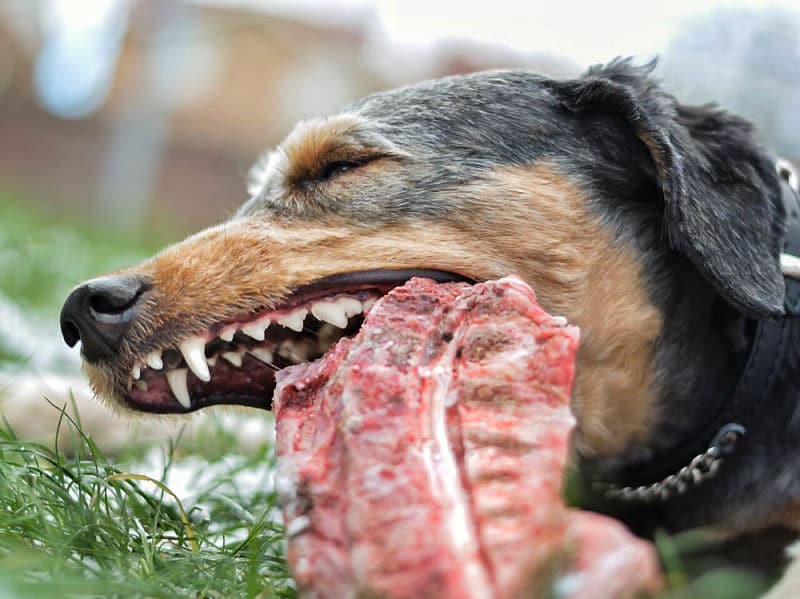
Which Types of Bones Should You Avoid?
It is best to avoid cooked or baked bones as they can easily splinter into sharp shards when chewed, putting your pup at risk for choking or digestive upset. Additionally, it is important to avoid poultry bones such as chicken or turkey as these can easily splinter into tiny pieces that can cause serious digestive issues or even puncture the intestinal tract when ingested by your pup.
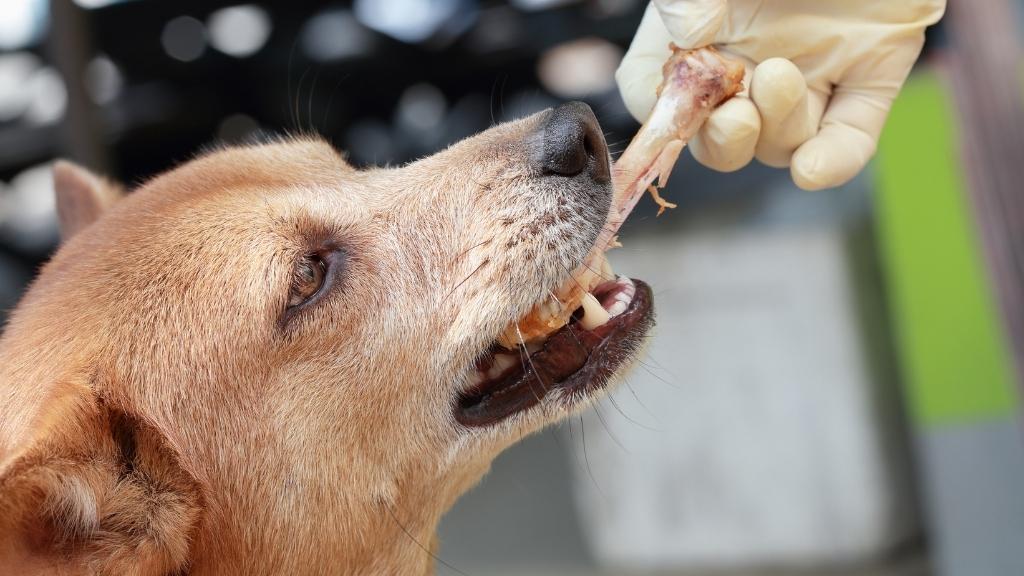
Health Benefits of Raw Bone Consumption
Nutrients Galore
Bones are an excellent source of nutrition for dogs. They contain healthy fats, minerals such as calcium, phosphorus, and magnesium, and trace amounts of other vitamins and minerals that are good for your dog’s health. Chewing on bones is also a great way to improve digestion by stimulating the production of saliva that helps break down food in the gut.
Clean Teeth & Fresh Breath
When a dog chews on raw meaty bones, it can provide natural dental health benefits for large dogs – they help clean the teeth and remove plaque buildup between them. Not only that but chewing on bare bones can help reduce bad breath caused by tartar buildup or bacteria in their mouths. This makes for a healthier mouth overall.
Mental Stimulation & Stress Reliever
Chewing bones is one of the dogs’ ways to relieve stress and relax – like when a dog chews on toys or furniture around your house! Giving your pup raw food will keep them occupied for hours at a time – giving you peace of mind that they’re safely preoccupied with something (hopefully) non-destructive. Raw bones for dogs also can make them mentally stimulated; chewing on something solid helps keep their brain active and their paws away from trouble.
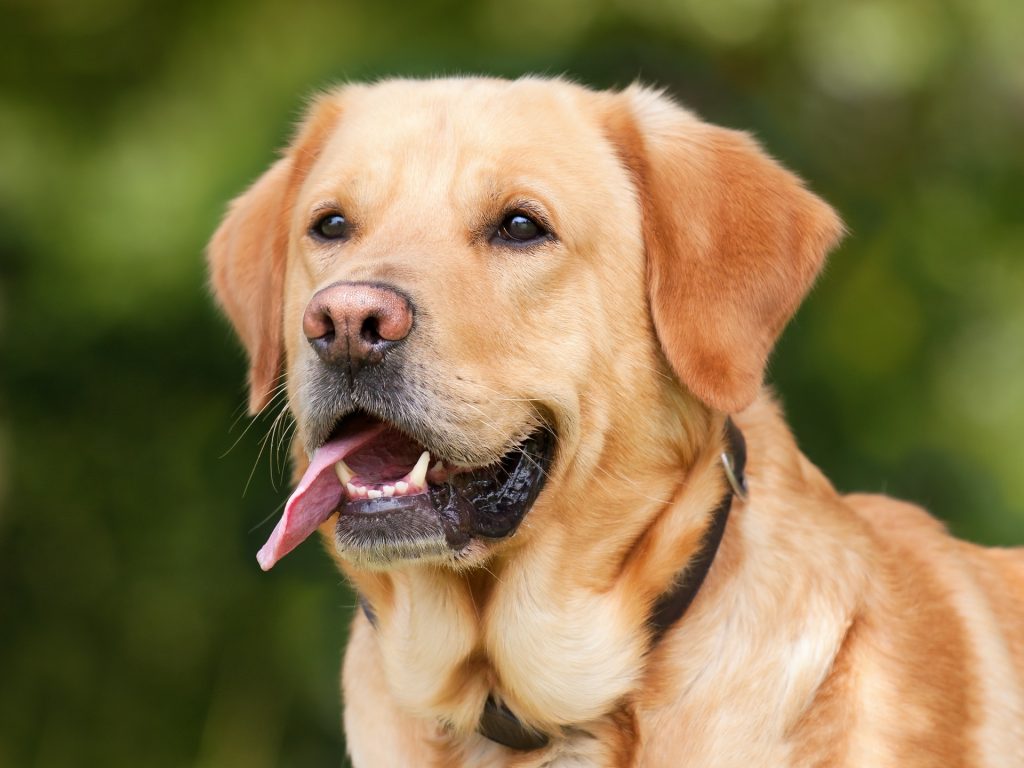
Potential Risks of Eating Raw Bones
Choking Hazards
The most obvious risk when you feed raw bones to your pet raw bones is the potential for choking. This can be especially dangerous if you provide medium-sized dogs with larger bones that may not fit easily in their mouths and could break teeth in dogs. Avoid feeding your dog bones that can be swallowed whole. If you give your pet larger raw bones, ensure they are properly supervised while consuming them and prioritize smaller pieces rather than large chunks of bone.
Bacterial Contamination Infections
Raw meat, including raw bones, can contain bacteria such as Salmonella or E. coli which can cause severe illnesses in both people and pets alike. Therefore, it’s important to ensure that any meat you give your pet is properly cleaned and stored before serving it to them. If you have doubts about whether the meat has been handled correctly, it’s best not to do it as the risk of infection isn’t worth taking.
Bone Fragments
Raw bones may splinter into sharp fragments, which can cause internal damage if consumed by your pet. To avoid this possibility, consider opting for well-cooked bones instead, as these are much less likely to splinter when eaten by your furry friend. Also, avoid giving your dog that has restorative dental work, as these medium dogs are at risk for dental problems.
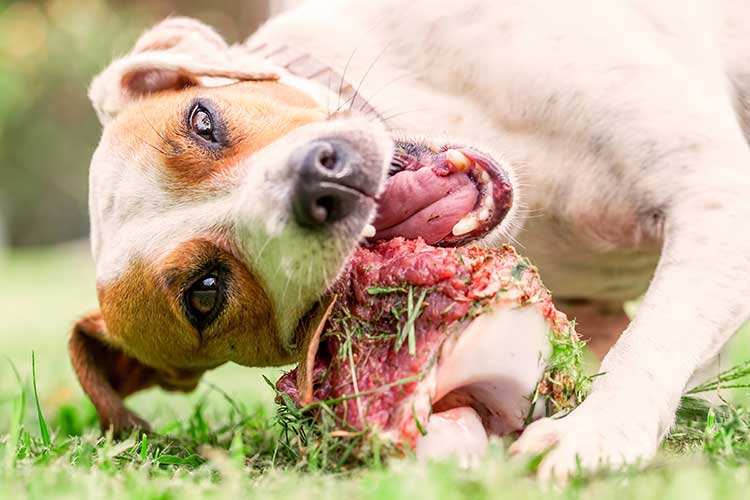
How to Feed Dogs Raw Bones Properly at Home
Choose the Right Bone for Your Dog
The first step in safely feeding raw bones to your dog is choosing the right bone for them. While many different types of bones are available, selecting one appropriate for your dog’s size and breed is crucial.
For example, small breeds may not be able to handle large beef bones, while larger species may require a bone that provides more nutrition than a typical pork bone. Additionally, avoid giving your pet cooked bones or those with added flavorings, as these can lead to an upset stomach or other digestive problems.
Prepare the Bone Properly
Once you have selected a suitable bone for your pup, preparing it properly before offering it up as a treat is important. Inspect the bone thoroughly and ensure no sharp edges or splinters could harm your dog’s mouth or gums.
You should also rinse off the bone with cold water before giving it to your pup so that any debris is removed. Finally, please supervise your pet if they try to swallow anything too big or start choking on a piece of the bone while enjoying their bone.
Store Raw Bones Safely
Finally, if you plan on having extra raw bones on hand for future treats or snacks for your pup, ensure they are stored properly in an airtight container in the refrigerator or freezer until you are ready to give them out again. This will help keep bacteria from growing on the bones and ensure they remain safe and healthy for Fido.
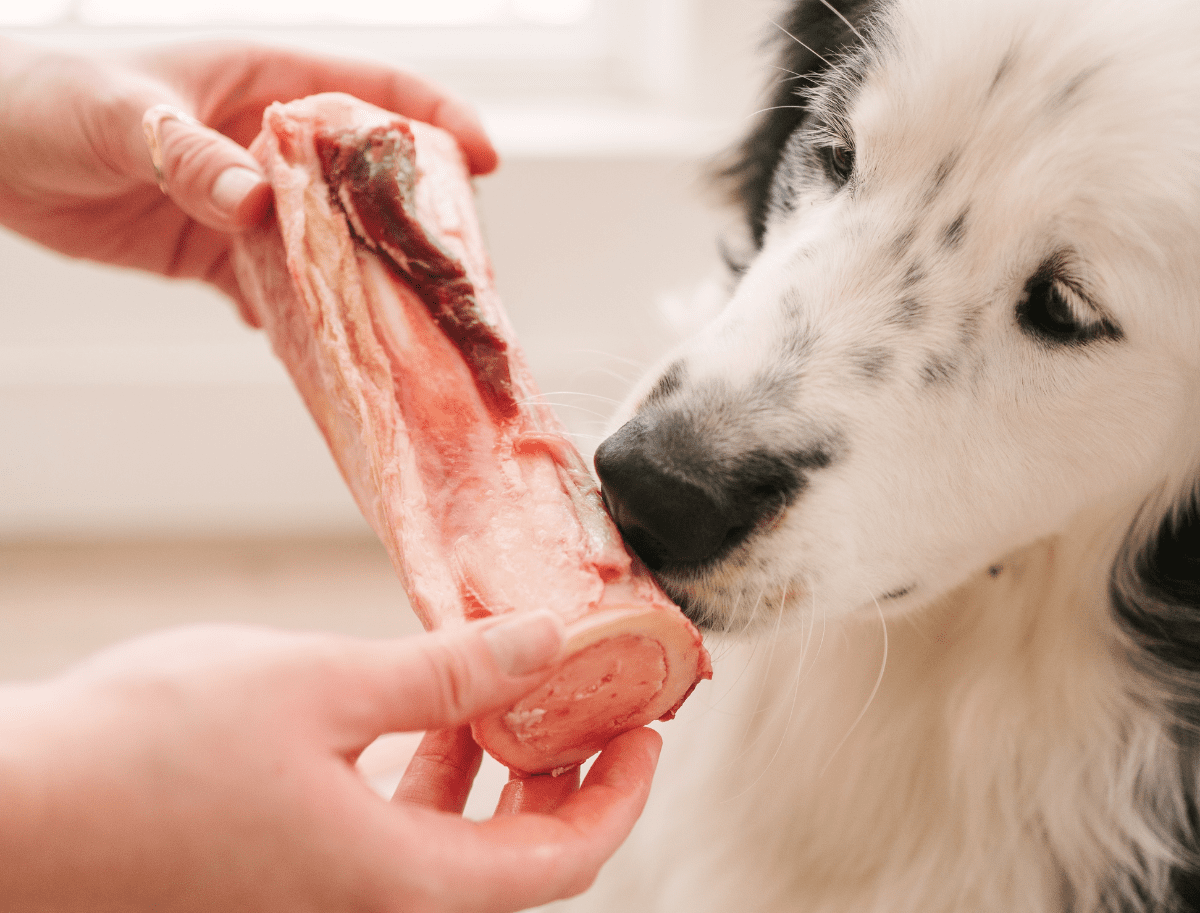
Final Thoughts
Raw bones can provide nutrition, mental stimulation, and a rawhide alternative for dogs. However, pet owners should be aware of the potential risks associated with feeding raw bones to their furry friend before considering adding them to their dog’s diet.
Always choose the right bone for your dog, prepare it properly, and store raw bones safely when not in use. By following these simple steps, you can ensure that your dogs love bare bones as a treat safely and healthily.
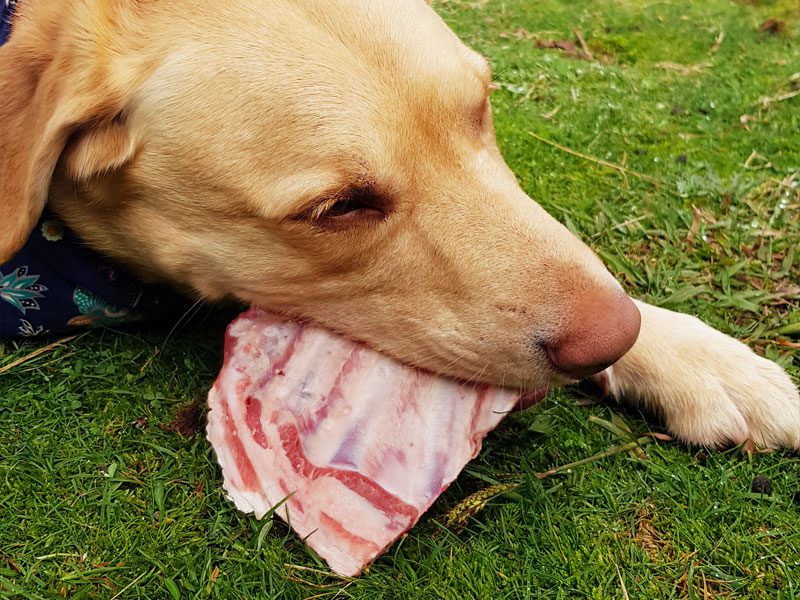
Frequently Asked Questions
WHAT KIND OF RAW BONES ARE SAFE FOR DOGS?
Home-cooked bones are potentially dangerous for your pet because they splinter easily and may contaminate their food. However, raw bone options like those from chicken or turkey can be a great way to provide necessary nutrients while also being safe.
CAN I FEED MY DOG RAW BONES?
There is a growing trend in the holistic community to feed raw meaty bones to dogs. Since these foods contain nutrients that can’t be found anywhere else, they make perfect complements when provided alongside another cooked diet – especially if your pup has any digestive issues.
CAN RAW BONES MAKE DOGS SICK?
Many people are unaware that raw bones can lead to infection in dogs. Your pet may not show symptoms, but the bacteria it sheds from these items could potentially infect family members and cause life-threatening illnesses.
CAN DOGS HAVE RAW BONES FROM THE BUTCHER?
The best way to feed your dog the right food is by sourcing it from a reputable local butcher who can process raw bones carefully and follow meticulous hygiene practices to minimize any potential risk of illness.

